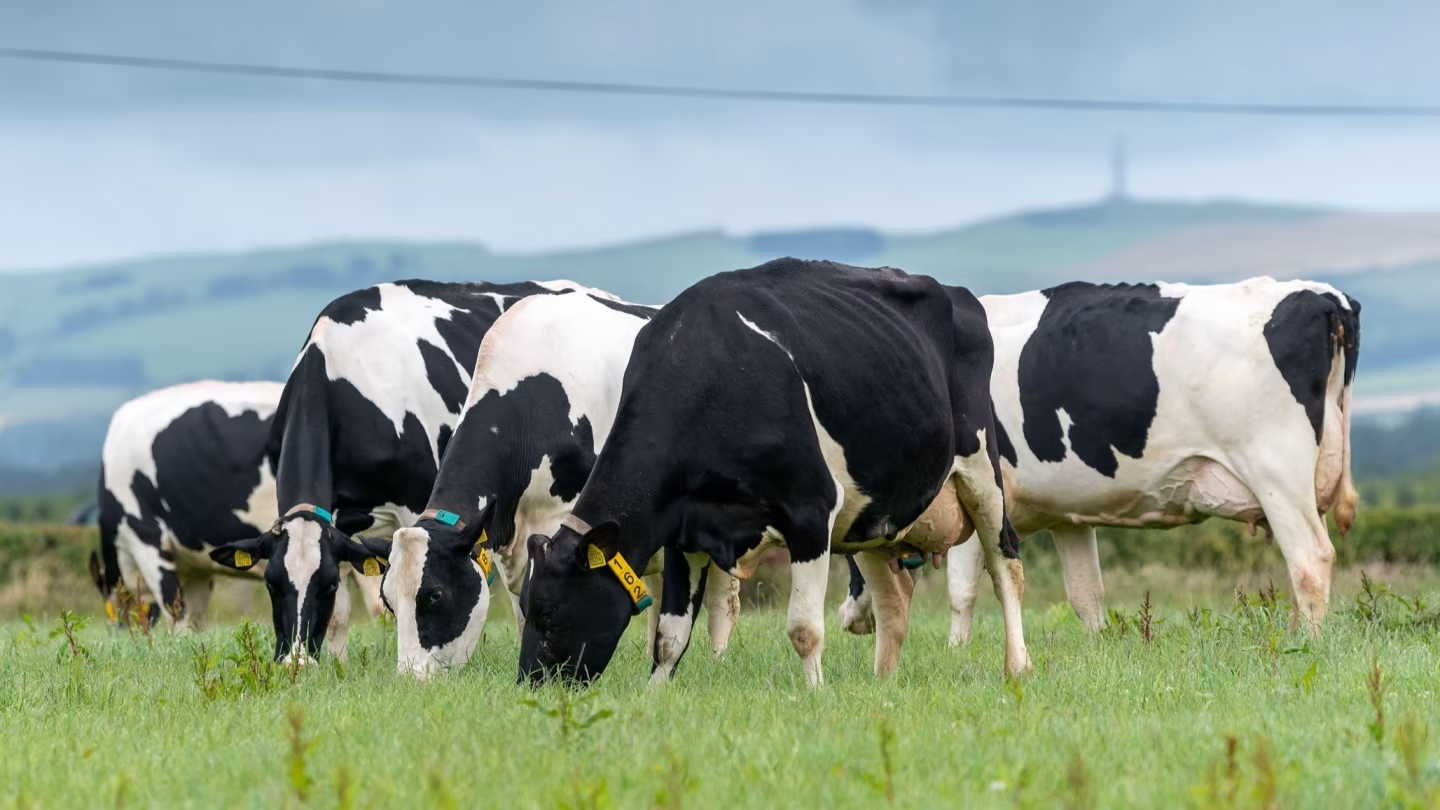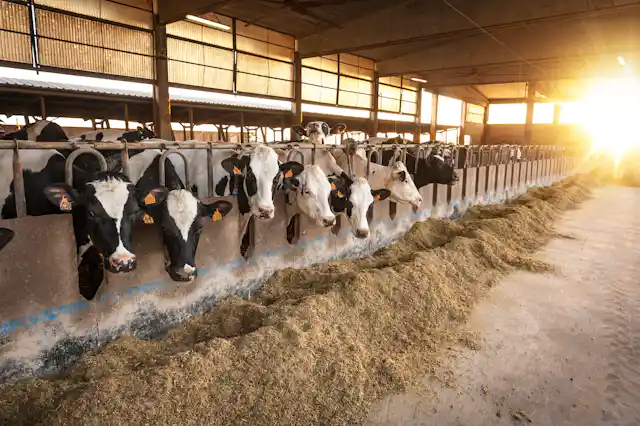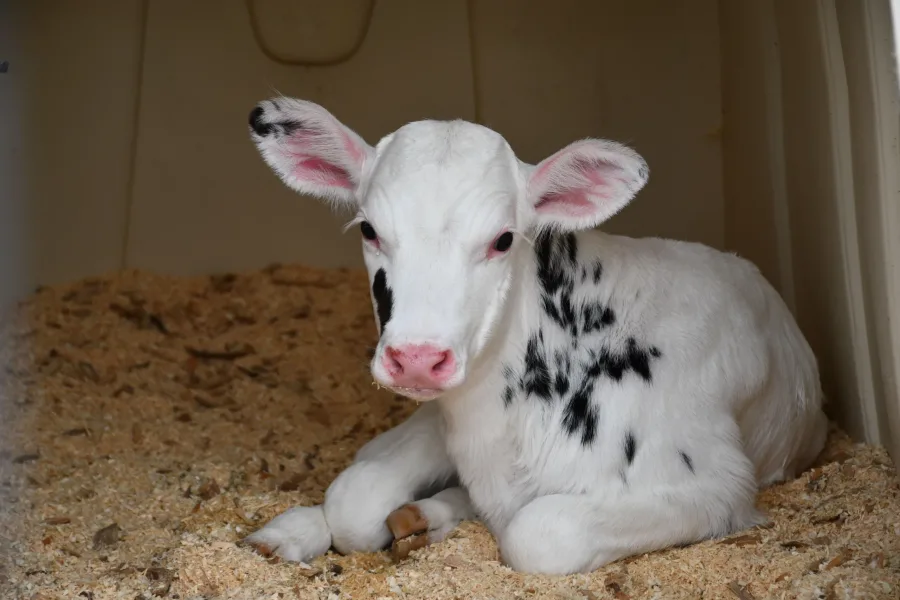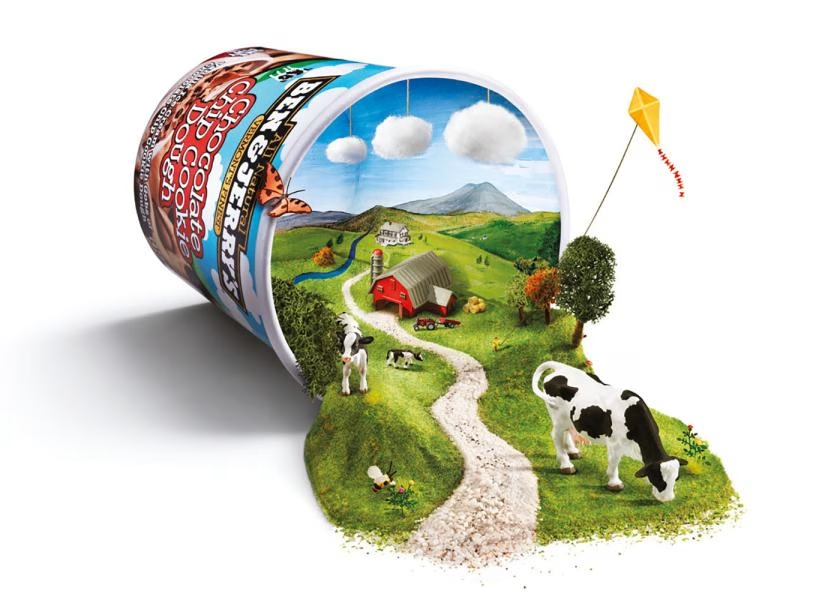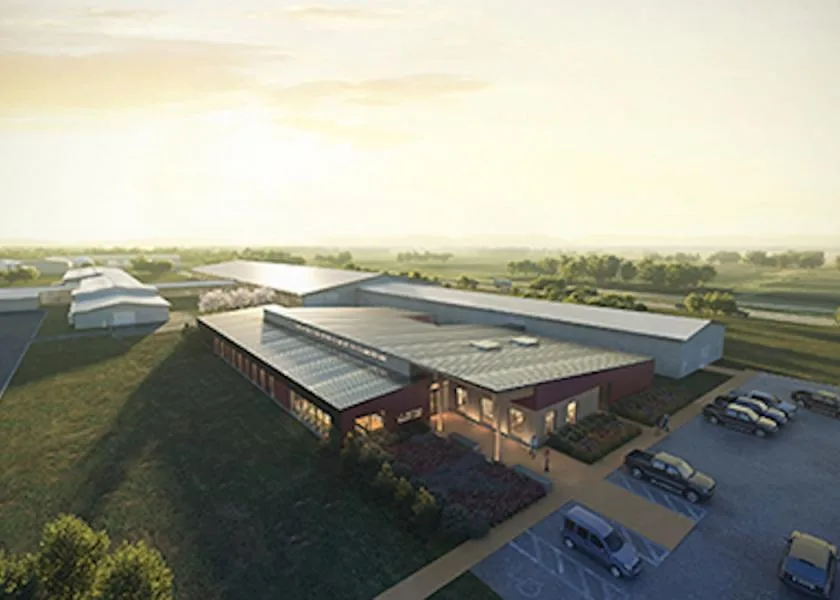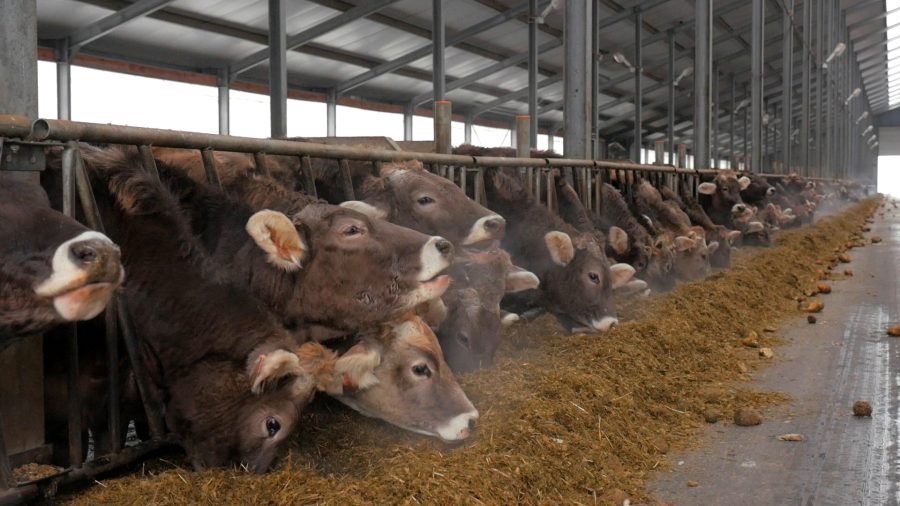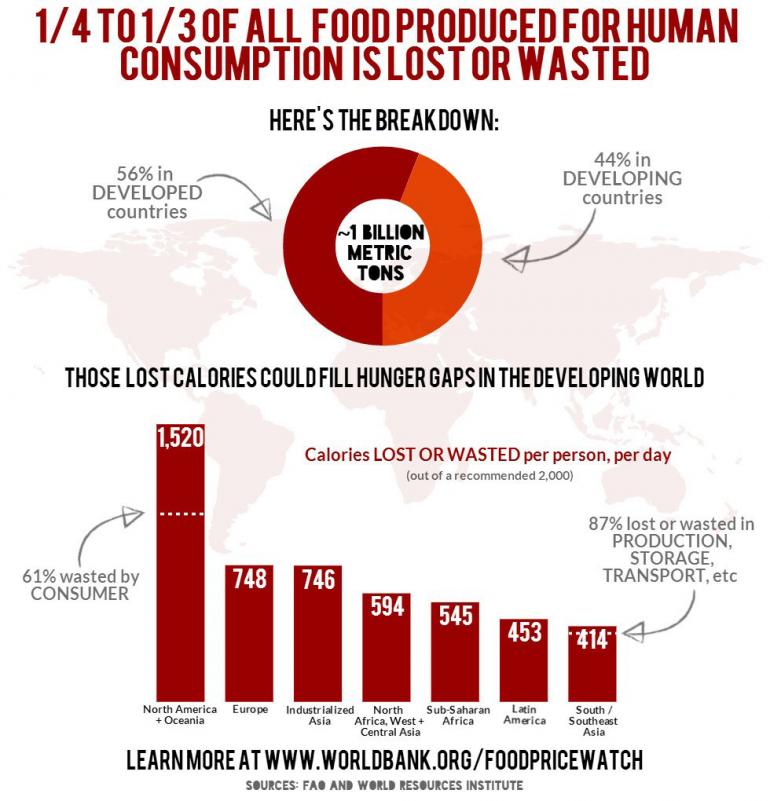Uncover the transformative impact of the “slick gene” on dairy farming. What advantages does this genetic innovation offer both livestock and their caretakers? Delve into this groundbreaking discovery now.
Imagine a day when your cows are more tolerant of heat and more productive—game-changing—for any dairy farmer battling climate change. Allow me to present the “slick gene,” a ground-breaking tool destined to revolutionize dairy output. This gene is found in tropical cow breeds and gives greater output even in hot temperatures and more thermal endurance.
Agricultural genetic developments have revolutionized farming by increasing crop and animal yield and stress resistance. Precision alteration of features made possible by CRISPR and gene editing technologies increases agrarian performance. The slick gene could be essential for producing cattle that thrive in higher temperatures, ensuring the dairy industry’s future.
Examining the “slick gene” helps one understand why agriculture has attracted such attention. Knowing its beginnings, biological processes, and uses on farms helps one better understand the direction of dairy farming. This path begins with investigating the function and significance of this gene.
The “Slick Gene”: A Revolutionary Genetic Anomaly
Because of its significant influence on cow physiology and output, the slick gene is a fantastic genetic abnormality that has fascinated geneticists and dairy producers. Shorter, sleeker hair from this gene mutation helps cattle deal better in hot and humid environments and increases their health and milk output.
Initially discovered in the early 1990s, this genetic variant was found in a paper published in the Proceedings of the 5th World Congress on Genetics Applied to Livestock Production (pages 341–343) after primary research by Lars-Erik Holm and associates in 1994. Their efforts prepared one to appreciate the unique qualities of the slick gene.
The slick gene consists of prolactin receptor (PRLR) mutations essential for breastfeeding and thermoregulation. These mutations provide a unique hair phenotype, which helps cattle better control heat, and they are beneficial over the typical genetic features of Bos taurus breeds.
The slick gene is a significant scientific development with practical uses that enhance bovine well-being and milk output, especially in hot environments. It is crucial in selective breeding projects aiming to improve production under demanding circumstances.
The Thermoregulatory Genius: How the “Slick Gene” Redefines Bovine Physiology
Because of their thinner coats, cattle with the “slick gene” have far improved heat dissipating capacity. This thinner covering helps them maintain a lower core body temperature even in great heat by improving ventilation and sweating, lowering heat stress. Furthermore, this adaptation enhances feed intake, milk output, and fertility. These physiological changes provide a whole boost, so slick gene cattle are vital for dairy producers in warmer areas and increase the profitability and sustainability of their enterprises.
Beyond Heat Tolerance: The “Slick Gene” as a Catalyst for Enhanced Dairy Production
Beyond its thermoregulating advantages, the “slick gene” has excellent potential for dairy producers. Agricultural genetics particularly interests milk production, which this genetic characteristic affects. By displaying gains in milk output, quality, and consistency, cattle with the “slick gene” typically help dairy farms to be more profitable.
Evidence indicates, as noted in the Proceedings of the 5th World Congress on Genetics Applied to Livestock Output, that slick-coated cows—especially in warmer climates—maintain constant milk output during heat waves, unlike their non-slick counterparts. Known to lower milk output, heat stress may cause significant financial losses for dairy producers; consequently, this stability is essential.
One clear example is Holstein cows produced with the slick gene. In 2010, Lars-Erik Holm’s World Congress on Genetics Applied to Livestock Production found that these cows produced 15% more milk at the highest temperatures. Furthermore, milk quality was constant with ideal fat and protein content, which emphasizes the gene’s capacity to improve production measures under environmental pressure.
Their performance in unfavorable weather underlines the practical advantages of slick gene carriers for dairy production in warmer climates. Reducing heat stress helps the slick gene provide a more consistent and efficient dairy business. Including the slick gene is a forward-looking, scientifically validated approach for farmers to maximize productivity and quality in the face of climate change.
Navigating the Complex Terrain of Integrating the “Slick Gene” into Dairy Herds
Including the “slick gene” in dairy cows creates several difficulties. The most important is preserving genetic variety. If one emphasizes too much heat tolerance, other essential features may suffer, resulting in a genetic bottleneck. Herd health, resistance to environmental changes, and illness depend on a varied gene pool.
Ethics also come into play. For the “slick gene,” genetic modification raises questions about animal welfare and the naturalness of such treatments. Critics contend that prioritizing commercial objectives via selective breeding might jeopardize animal welfare. Advocates of ethical farming want a mixed strategy that honors animals while using technological advancement.
One further challenge is opposition from the agricultural community. Concerning long-term consequences and expenses, conventional farmers might be reluctant to introduce these genetically distinct cattle. Their resistance stems from worries about milk quality and constancy of output. Dealing with this resistance calls for good outreach and education stressing the “slick genes” advantages for sustainability and herd performance.
The Future of Dairy Farming: The Transformative Potential of the “Slick Gene”
The “slick gene” in dairy farming presents game-changing opportunities to transform the sector. Deciphering the genetic and physiological mechanisms underlying this gene’s extraordinary heat tolerance is still a challenge that requires constant study. These investigations are not only for knowledge but also for including this quality in other breeds. Visioning genetically better dairy cattle, researchers are investigating synergies between the “slick gene” and other advantageous traits like increased milk output and disease resistance.
Rising world temperatures and the need for sustainable agriculture generate great acceptance possibilities for the “slick gene.” Hot area dairy producers will probably be early adopters, but the advantages go beyond just heat tolerance. By advancing breeding technology, “slick gene” variations catered to specific surroundings may proliferate. This may result in a more robust dairy sector that minimizes environmental effects and satisfies world dietary demands.
Integration of the “slick gene” might alter accepted methods in dairy production in the future. Improvements in gene-editing technologies like CRISpen will hasten its introduction into current herds, smoothing out the change and saving costs. This genetic development suggests a day when dairy cows will be more resilient, prolific, and climate-adaptive, preserving the business’s sustainability. Combining modern science with conventional agricultural principles, the “slick gene” is a lighthouse of invention that will help to define dairy production for the next generations.
The Bottom Line
Representing a breakthrough in bovine genetics, the “slick gene” gives dairy producers a fresh approach to a significant problem. This paper investigates the unique features of this gene and its strong influence on bovine thermoregulation—which improves dairy production efficiency under high-temperature conditions. Including the “slick gene” in dairy herds is not just a minor enhancement; it’s a radical revolution that will help farmers and their animals economically and practically.
The benefits are comprehensive and convincing, from higher milk output and greater fertility to less heat stress and better general animal health. The value of genetic discoveries like the “slick gene” cannot be emphasized as the agriculture industry struggles with climate change. These developments combine sustainability with science to produce a more robust and efficient dairy sector.
All dairy farmers and other agricultural sector members depend on maintaining current with genetic advancements. Adopting this technology can boost environmentally friendly food production and keep your business competitive. The “slick gene” represents the transforming potential of agricultural genetic study. Let’s be vigilant and aggressive in implementing ideas that improve farm profitability and animal welfare.
Key Takeaways:
- Heat Tolerance: Cattle with the “slick gene” exhibit superior thermoregulation, enabling them to withstand higher temperatures while maintaining productivity.
- Enhanced Dairy Production: Improved heat tolerance leads to increased milk yield and quality, even in challenging climatic conditions.
- Genetic Integration: Incorporating the “slick gene” into existing dairy herds poses both opportunities and complexities, requiring careful breeding strategies.
- Future Prospects: The “slick gene” has the potential to revolutionize dairy farming practices, offering a sustainable solution to climate-related challenges.
Summary:
The “slick gene” is a genetic abnormality in tropical cow breeds that enhances productivity and thermal endurance. It consists of prolactin receptor (PRLR) mutations essential for breastfeeding and thermoregulation. The short, sleeker hair of the slick gene helps cattle cope better in hot and humid environments, increasing their health and milk output. The slick gene is crucial in selective breeding projects aiming to improve production under demanding circumstances. Its thinner coats improve heat dissipating capacity, allowing cattle to maintain a lower core body temperature even in great heat. This adaptation also enhances feed intake, milk output, and fertility, making slick gene cattle vital for dairy producers in warmer areas and increasing profitability and sustainability. Holstein cows produced with the slick gene produced 15% more milk at the highest temperatures and maintained constant milk quality with ideal fat and protein content. The future of dairy farming presents game-changing opportunities for the “slick gene,” as researchers are investigating synergies between the gene’s extraordinary heat tolerance and other advantageous traits like increased milk output and disease resistance.





